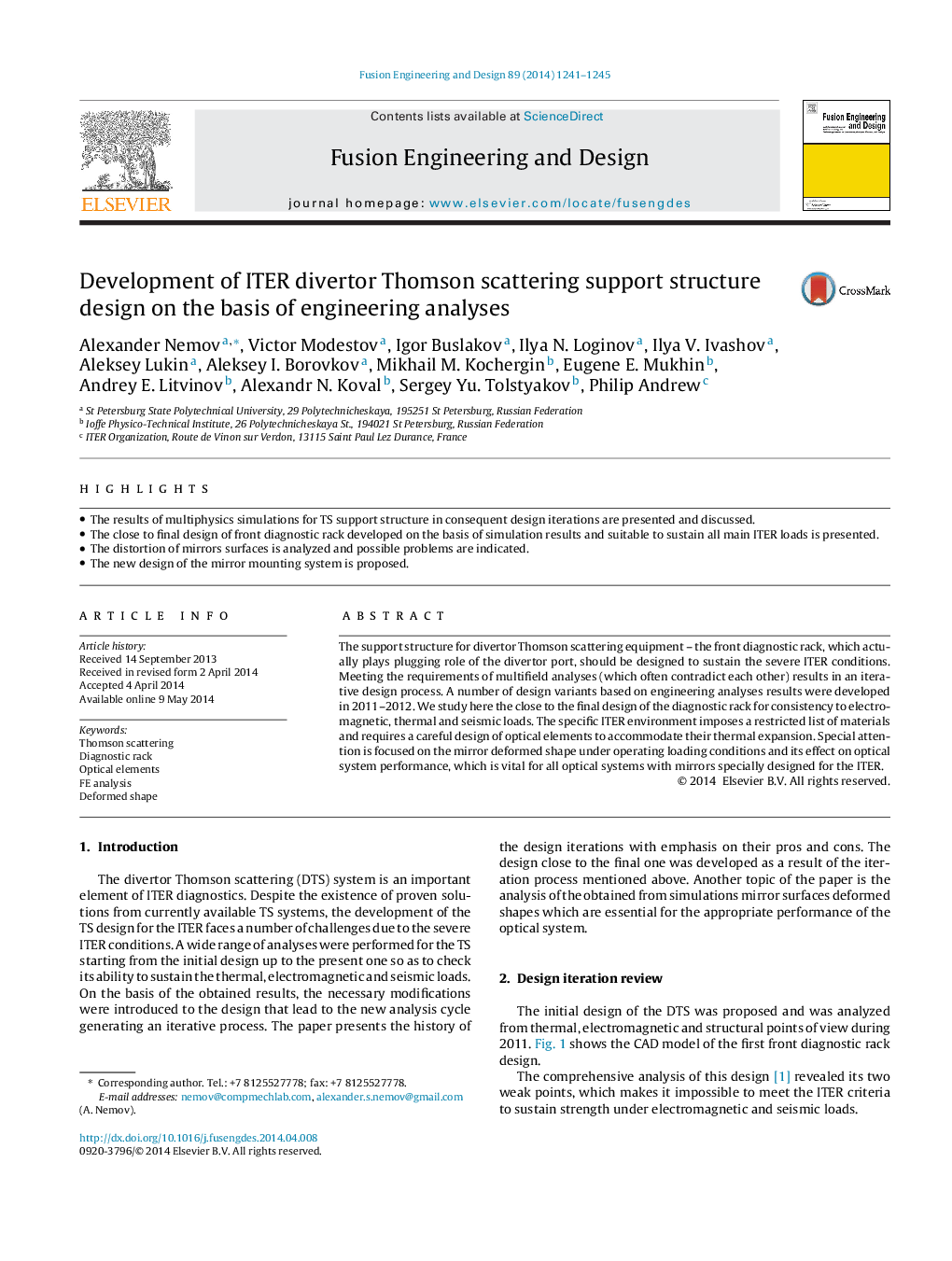| Article ID | Journal | Published Year | Pages | File Type |
|---|---|---|---|---|
| 271212 | Fusion Engineering and Design | 2014 | 5 Pages |
•The results of multiphysics simulations for TS support structure in consequent design iterations are presented and discussed.•The close to final design of front diagnostic rack developed on the basis of simulation results and suitable to sustain all main ITER loads is presented.•The distortion of mirrors surfaces is analyzed and possible problems are indicated.•The new design of the mirror mounting system is proposed.
The support structure for divertor Thomson scattering equipment – the front diagnostic rack, which actually plays plugging role of the divertor port, should be designed to sustain the severe ITER conditions. Meeting the requirements of multifield analyses (which often contradict each other) results in an iterative design process. A number of design variants based on engineering analyses results were developed in 2011–2012. We study here the close to the final design of the diagnostic rack for consistency to electromagnetic, thermal and seismic loads. The specific ITER environment imposes a restricted list of materials and requires a careful design of optical elements to accommodate their thermal expansion. Special attention is focused on the mirror deformed shape under operating loading conditions and its effect on optical system performance, which is vital for all optical systems with mirrors specially designed for the ITER.
